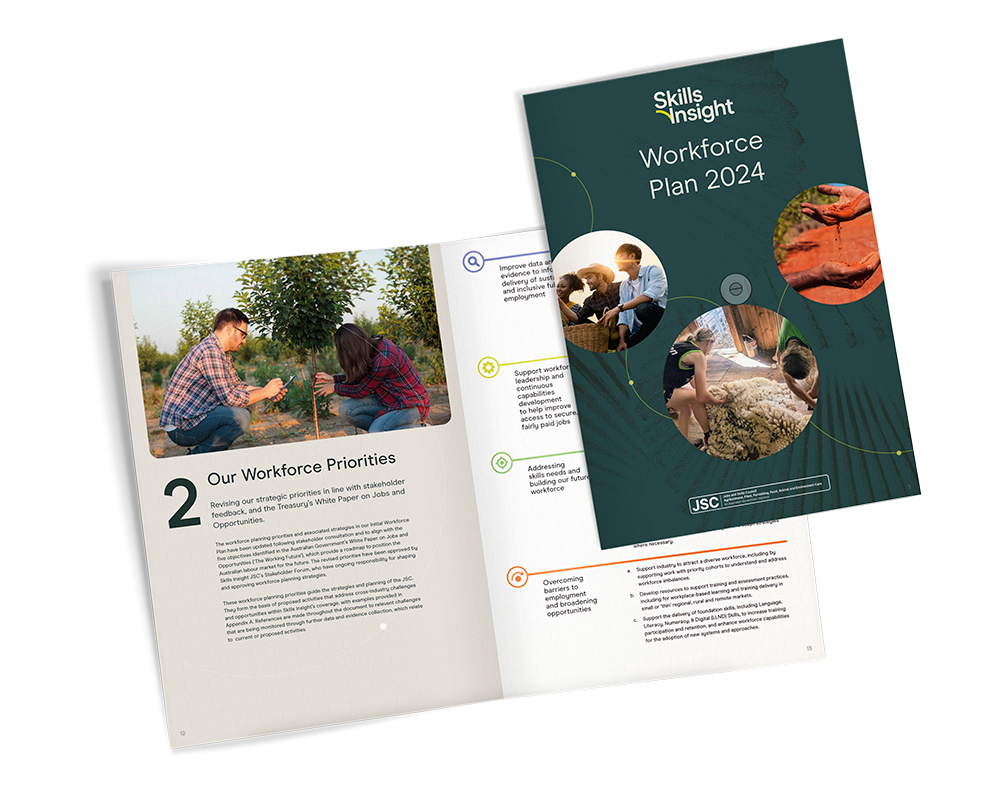The workforce is responsible for the management and harvesting operations of forests designated for timber and fibre production, whether they are publicly or privately owned. Expert skills are required to meet the various challenges of managing forests sustainably and mitigating the effects of disasters, such as bushfires, as well as utilising data and digital technologies to undertake planning and certification activities.
Key updates
Reduction of native timber harvesting creating uncertainties
Despite the state governments’ commitment to increase support for further development of plantation forestry, the decision to end native timber logging in Victoria and Western Australia from 2024 raised widespread industry concern. This includes its impact on future timber supply, regional businesses across the value chain, and on regional communities linked to forestry value chain operations.
Challenging operating conditions in recent years
The industry has seen weakening harvest volumes and a gradual declining trend in the cumulative hours worked in occupations such as Forestry and Logging workers (from 469000 hrs in 2016 to 246000 in 2023, according to the Labour Force Survey). This may reflect the cessation of native timber harvesting and disruptions in downstream markets from the pandemic.
Opportunities
Potential for skills shortage alleviation
Some occupations within the forest industry, such as Truck Driver, are classified as being in shortage on the Skills Priority List. Regional Forestry Hubs determine other shortages and provide the government with strategic plans to support growth.
Increasing representation of First Nations
Participation by First Nations peoples has risen by 1.4% between 2016 and 2021.
Digital and automation practices
The industry has been readily adopting technology such as drones, scanners, block-chain applications and big data analytics, which are changing industry skills requirements.
Challenges
Extreme Weather
Bushfires and floods have caused, and will continue to cause, extensive damage to forests and plantations, with long-term consequences for forestry businesses, such as changes to timber quality and availability, disruption of supply chains, and impacts on forest management practices.
Impact from legislations
Introduction of the Ending Native Forest Logging Bill 2023 into Parliament would see further actions to halt logging if successful, which in turn would exacerbate employment and reskilling challenges, especially in the context of an ageing workforce and thin training markets.
Stability and sustainability of domestic wood supplies Declining plantation estates, coupled with removed access to native hardwood resources for commercial timber production in Victoria and Western Australia, poses significant risks for the long-term security of both hardwood and softwood supplies, which are essential for the Australian economy and its ability to reduce its carbon footprint through the use of low carbon building products such as timber and wood composites.
Data monitoring priorities

9,891
workers
(2021 Census)
6.8%
First Nations
(2021 Census)
1,400
2028 Projection
(JSA Projections)

21%
Female
(2021 Census)

Workforce Plan 2024
The Workforce Plan describes workforce challenges and skill opportunities identified by stakeholders across the industries we work with and outlines strategies to address them.
The 2024 Workforce Plan outlines four key Workforce Planning Priorities to guide the strategies and planning of our JSC work, retaining the strategic intent of the Initial Workforce Plan, with modifications to align with the Australia Government’s White Paper on Jobs and Opportunities.